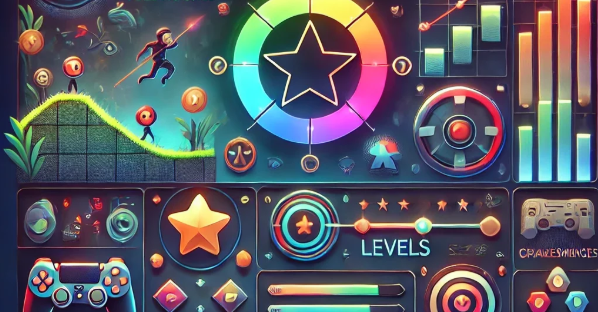In an industry that evolves rapidly, certain role-playing games (RPGs) have managed to captivate players for decades. The secret to this longevity doesn’t lie in graphics or hardware power alone—it’s embedded deep within the mechanics that shape player experiences. From intricate skill systems to modular quest design, modern RPGs leverage psychological and technological mechanisms to ensure long-term engagement.
The Core Loop: Challenge, Progression, Reward
At the heart of every successful RPG is a finely tuned gameplay loop that offers challenge, progression, and reward. This loop taps into fundamental human motivation:
- Challenge provides stimulation and triggers a desire to overcome
- Progression reflects growth and mastery
- Reward reinforces behavior and encourages repetition
When layered with meaningful story arcs or sandbox freedom, this loop becomes highly addictive. A prime example of this is the Slayer skill in Old School RuneScape (OSRS), where players are assigned combat tasks by various Slayer Masters, each offering increasingly difficult monsters as the player’s skill improves.
Modular Game Systems: Flexibility as Retention Strategy
Modern RPGs are moving away from linear storytelling. Instead, they use modular systems—mechanics that function independently but interlock to form a dynamic experience. These can include:
- Crafting systems
- Reputation factions
- Housing or settlement mechanics
- Slayer task systems
What makes these systems effective is their scalability and player autonomy. For instance, OSRS offers different Slayer Masters based on a player’s combat level and Slayer rank. This modular design allows players to set their own pace and choose the level of difficulty and reward they desire, keeping content relevant for both beginners and veterans.
For a breakdown of which Slayer Masters offer the best tasks and rewards, check out this detailed guide https://rsps-server.com/blog/best-slayer-masters-in-osrs .
Dynamic Difficulty and Personalized Challenge
Rather than static quests, many RPGs now adjust their difficulty based on user behavior and stats. This adaptive design ensures a consistent level of challenge, avoiding boredom or frustration. In OSRS, this is reflected in how different Slayer Masters assign different monsters, some more efficient or profitable than others depending on the player’s build and goals.
Games like Skyrim and The Witcher 3 use similar tactics—enemies may scale with your level or offer alternate strategies for different player builds. The goal is always the same: create a tailored experience that feels uniquely challenging.
Psychological Drivers Behind Long-Term Engagement
What keeps players coming back for hundreds—or even thousands—of hours? Successful RPGs leverage several psychological principles:
- Variable reinforcement schedules (loot drops, rare rewards)
- Sunk cost fallacy (the deeper the investment, the harder it is to leave)
- Social proof (seeing others succeed pushes players to optimize)
- Mastery-based progression (reaching higher tiers unlocks exclusive content)
Slayer Masters in OSRS function as perfect examples of mastery-based progression. You don’t just fight monsters—you climb a hierarchy that reflects your investment and skill. The further you progress, the better the tasks and loot become, reinforcing long-term commitment.
Integration of AI and Modern Tech in Game Mechanics
While older RPGs relied on hardcoded paths, modern games use AI systems to create procedural content or respond to player behavior in real time. This includes:
- Smart NPCs that remember player actions
- Quest lines that branch dynamically
- Combat systems that adapt to your strategy
Though OSRS remains largely traditional in structure, its longevity has prompted third-party tools and plugins that enhance the experience—such as overlay systems, XP trackers, and task planners. These tools represent an unofficial tech enhancement layer that supports the game’s retention mechanics.
Why Legacy Mechanics Still Matter
Despite the tech advances, classic systems—like those seen in OSRS—still thrive. Why? Because they are:
- Predictable, yet flexible
- Transparent in rewards and progression
- Designed around long-term personal investment
Players are often drawn to systems they can master over time, not just consume quickly. Slayer Masters in OSRS, with their tiered access and variable tasks, embody a legacy design that continues to deliver value in 2025.
Key Takeaways from Timeless
In an industry that evolves rapidly, certain role-playing games (RPGs) have managed to captivate players for decades. The secret to this longevity doesn’t lie in graphics or hardware power alone—it’s embedded deep within the mechanics that shape player experiences. From intricate skill systems to modular quest design, modern RPGs leverage psychological and technological mechanisms to ensure long-term engagement.
The Core Loop: Challenge, Progression, Reward
At the heart of every successful RPG is a finely tuned gameplay loop that offers challenge, progression, and reward. This loop taps into fundamental human motivation:
- Challenge provides stimulation and triggers a desire to overcome
- Progression reflects growth and mastery
- Reward reinforces behavior and encourages repetition
When layered with meaningful story arcs or sandbox freedom, this loop becomes highly addictive. A prime example of this is the Slayer skill in Old School RuneScape (OSRS), where players are assigned combat tasks by various Slayer Masters, each offering increasingly difficult monsters as the player’s skill improves.
Modular Game Systems: Flexibility as Retention Strategy
Modern RPGs are moving away from linear storytelling. Instead, they use modular systems—mechanics that function independently but interlock to form a dynamic experience. These can include:
- Crafting systems
- Reputation factions
- Housing or settlement mechanics
- Slayer task systems
What makes these systems effective is their scalability and player autonomy. For instance, OSRS offers different Slayer Masters based on a player’s combat level and Slayer rank. This modular design allows players to set their own pace and choose the level of difficulty and reward they desire, keeping content relevant for both beginners and veterans.
For a breakdown of which Slayer Masters offer the best tasks and rewards, check out this detailed guide https://rsps-server.com/blog/best-slayer-masters-in-osrs .
Dynamic Difficulty and Personalized Challenge
Rather than static quests, many RPGs now adjust their difficulty based on user behavior and stats. This adaptive design ensures a consistent level of challenge, avoiding boredom or frustration. In OSRS, this is reflected in how different Slayer Masters assign different monsters, some more efficient or profitable than others depending on the player’s build and goals.
Games like Skyrim and The Witcher 3 use similar tactics—enemies may scale with your level or offer alternate strategies for different player builds. The goal is always the same: create a tailored experience that feels uniquely challenging.
Psychological Drivers Behind Long-Term Engagement
What keeps players coming back for hundreds—or even thousands—of hours? Successful RPGs leverage several psychological principles:
- Variable reinforcement schedules (loot drops, rare rewards)
- Sunk cost fallacy (the deeper the investment, the harder it is to leave)
- Social proof (seeing others succeed pushes players to optimize)
- Mastery-based progression (reaching higher tiers unlocks exclusive content)
Slayer Masters in OSRS function as perfect examples of mastery-based progression. You don’t just fight monsters—you climb a hierarchy that reflects your investment and skill. The further you progress, the better the tasks and loot become, reinforcing long-term commitment.
Integration of AI and Modern Tech in Game Mechanics
While older RPGs relied on hardcoded paths, modern games use AI systems to create procedural content or respond to player behavior in real time. This includes:
- Smart NPCs that remember player actions
- Quest lines that branch dynamically
- Combat systems that adapt to your strategy
Though OSRS remains largely traditional in structure, its longevity has prompted third-party tools and plugins that enhance the experience—such as overlay systems, XP trackers, and task planners. These tools represent an unofficial tech enhancement layer that supports the game’s retention mechanics.
Why Legacy Mechanics Still Matter
Despite the tech advances, classic systems—like those seen in OSRS—still thrive. Why? Because they are:
- Predictable, yet flexible
- Transparent in rewards and progression
- Designed around long-term personal investment
Players are often drawn to systems they can master over time, not just consume quickly. Slayer Masters in OSRS, with their tiered access and variable tasks, embody a legacy design that continues to deliver value in 2025.
Key Takeaways from Timeless RPG Systems:
- Long-term engagement is fueled by scalable and modular mechanics
- Psychological triggers like progression and variable rewards are critical
- Legacy systems like Slayer Masters in OSRS remain effective due to design simplicity and depth
- Technology can enhance, but not replace, well-structured core mechanics
Game developers looking to create retention-focused RPGs would do well to study the interplay of design and psychology in games like OSRS. The mechanics may be decades old, but their influence—and effectiveness—endure
- Long-term engagement is fueled by scalable and modular mechanics
- Psychological triggers like progression and variable rewards are critical
- Legacy systems like Slayer Masters in OSRS remain effective due to design simplicity and depth
- Technology can enhance, but not replace, well-structured core mechanics
Game developers looking to create retention-focused RPGs would do well to study the interplay of design and psychology in games like OSRS. The mechanics may be decades old, but their influence—and effectiveness—endure










Recent Comments